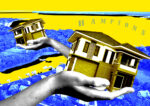
Trending
Demand for multilingual real estate agents rises
It’s not just about knowing the language but also understanding cultural cues, agents say

Miami realtor Patrizia Pluchino said she knew she had made a mistake when a Chinese couple she was working with ghosted her.
“I was treating them as you would treat any couple in the Western world, being nice with the lady. They disappeared on me,” she said. “I was supposed to address him and not her.”
Pluchino, a sales manager with the Miami-based Keyes Company, learned her lesson. It’s not just about understanding the language, but also knowing different cultural cues when dealing with foreign buyers that can make the difference between closing a deal and not. That’s more important now as demand from non-English speaking buyers and renters grows.
“Typically when you know the language you kind of know how they interact, their dynamics,” said Pluchino, who was raised in Venezuela. And if you know their culture, you may also know how buying and selling differs in that person’s native country, she added.
“There are many countries where [escrow accounts] do not exist,” Pluchino said, which can make a huge difference in making someone comfortable with a deal because escrow accounts protect both parties.
Maria Velazaquez, a Compass agent in New York who works with her mother and brother in Miami, said that she will sometimes walk her non-English speaking clients through the process from start to finish.
“They have to understand how an offer works, how it’s presented, the insurance, how the rental market works if they were to rent out their properties,” she said. “Everything is new for them.”
More brokerages across the country are seeking multilingual real estate agents. Some firms in Florida, New York and elsewhere have agents who collectively speak more than a dozen agents. New York-based Leven Real Estate has 16 agents who speak 13 languages, including Portuguese, Turkish, Dutch, Italian and Chinese.
Philip Hordijk, founder of the firm, said he was able to tap into international buyers, including Latin Americans and Europeans, back in 2012. His firm works with domestic and international clients, with listings ranging from $600,000 to $39 million.
Speaking someone’s language creates “instant trust because you’re meeting them where they are,” Hordijk said. “They don’t have to think about what they’re saying. There’s no miscommunication.”
Hordijk added there are other quirks. In some cultures, “if you haven’t had food together, you’re not doing a deal,” while in others, fierce negotiations are a must, with buyers offering sometimes 20 percent below ask.
“In New York, that may lead to not even getting an offer,” Hordijk added.
In Miami, the realtors’ association — the largest in the country — launched a multilingual consumer property search last year.
Some brokerages have agents or employees who have translated documents for their clients to help simplify the process.
At Coldwell Banker’s White Plains office, covering Westchester County, broker and senior managing director Michael Weiss said 18 languages are spoken. Spanish is the most prevalent.
“We have some people who have the ability to create a buyer packet in their language [and] some people who translate listing docs,” he said. Sometimes agents will translate for buyers when speaking with loan officers or attorneys.
Larry Paredes, an agent in that White Plains office, works with Spanish-speaking buyers, including someone who recently was in the process of buying a co-op. Paredes said it was important for him to speak with the whole family first.
“Buying a home or selling a home or renting a home can be very stressful,” Weiss said. “[This] makes that process easier.”
Agents said that they’re able to relate more to clients who grew up or are from other countries on a deeper level.
Read more


If a client makes an embarrassing faux pas that may elicit a not-so-nice response from a New Yorker, “I can see where they’re coming from,” Hordijk said.
“Beyond the multilingual part it’s also having visited the places, having an open mind and understanding the differences,” he said. “Oftentimes we’re here without our family. We understand this is a survival story.”




